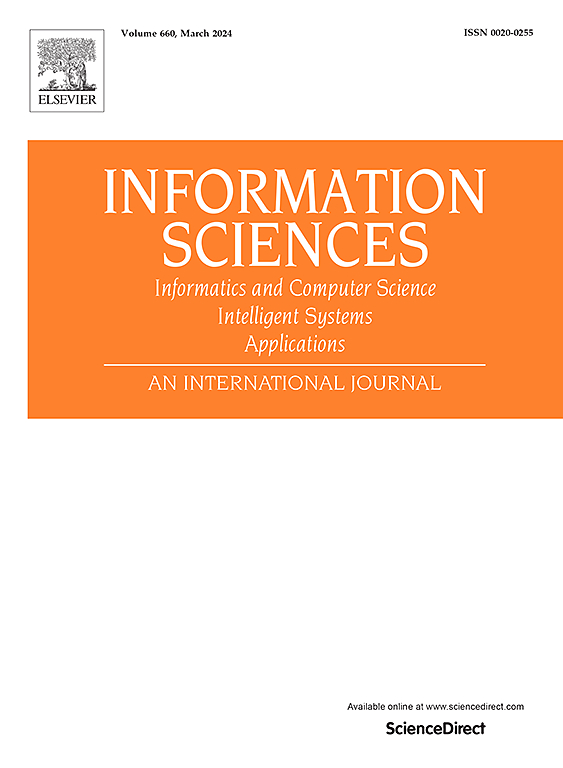基于小波增量熵的空间频率纹理分析:方法及其在多发性硬化症MRI中的应用
IF 6.8
1区 计算机科学
0 COMPUTER SCIENCE, INFORMATION SYSTEMS
引用次数: 0
摘要
纹理分析是通过提取定义空间模式的特征来理解图像的关键。近年来,熵测度的二维扩展由于其简单性和强大的理论基础而受到人们的关注。然而,现有的方法主要是在空间域中操作,从而忽略了频域和多尺度信息。为了解决这个问题,我们引入了二维小波增量熵(wavelet IncrEn2D)。带有Haar小波的单级离散小波变换(DWT)将每个图像分解为近似(低频)和一些神经成像数据的详细(高频)子带;然后应用IncrEn2D来捕获全局结构模式和精细,详细的纹理变化。我们在合成和真实数据集上评估了小波IncrEn2D,证明了它在区分不同噪声类型(高斯白噪声、椒盐噪声和斑点噪声)方面的有效性。周期图像与合成图像的比较表明,周期纹理的小波增量2d值较低。在真实纹理数据集上的测试突出了该方法区分各种图案的能力。特别是,小波IncrEn2D在区分健康与多发性硬化症影响的大脑MRI图像方面的准确率达到86.69%。总的来说,小波IncrEn2D提供了一个鲁棒的、频率感知的描述符,优于现有的二维熵方法。本文章由计算机程序翻译,如有差异,请以英文原文为准。
Spatio-frequency texture analysis using wavelet increment entropy: Methodology and application to MRI in multiple sclerosis
Texture analysis is crucial for understanding images by extracting features that define spatial patterns. Recently, bi-dimensional extensions of entropy measures have gained attention due to their simplicity and strong theoretical foundations. However, existing methods primarily operate in the spatial domain and thus overlook frequency-domain and multiscale information. To address this, we introduce bidimensional wavelet increment entropy (wavelet IncrEn). A one-level discrete wavelet transform (DWT) with the Haar wavelet decomposes each image into approximation (low-frequency) and, for some neuroimaging data, detail (high-frequency) subbands; IncrEn is then applied both to capture global structural patterns and fine, detailed texture variations. We evaluated wavelet IncrEn on synthetic and real datasets, demonstrating its effectiveness in distinguishing between different noise types (white Gaussian, salt-and-pepper, and speckle noise). Comparisons between periodic and synthesized images revealed lower wavelet IncrEn values for periodic textures. Tests on real texture datasets highlight the method's ability to differentiate various patterns. In particular, wavelet IncrEn achieved 86.69% accuracy in distinguishing MRI images of healthy versus multiple sclerosis–affected brains. Overall, wavelet IncrEn offers a robust, frequency-aware descriptor that outperforms existing 2D entropy methods.
求助全文
通过发布文献求助,成功后即可免费获取论文全文。
去求助
来源期刊

Information Sciences
工程技术-计算机:信息系统
CiteScore
14.00
自引率
17.30%
发文量
1322
审稿时长
10.4 months
期刊介绍:
Informatics and Computer Science Intelligent Systems Applications is an esteemed international journal that focuses on publishing original and creative research findings in the field of information sciences. We also feature a limited number of timely tutorial and surveying contributions.
Our journal aims to cater to a diverse audience, including researchers, developers, managers, strategic planners, graduate students, and anyone interested in staying up-to-date with cutting-edge research in information science, knowledge engineering, and intelligent systems. While readers are expected to share a common interest in information science, they come from varying backgrounds such as engineering, mathematics, statistics, physics, computer science, cell biology, molecular biology, management science, cognitive science, neurobiology, behavioral sciences, and biochemistry.
 求助内容:
求助内容: 应助结果提醒方式:
应助结果提醒方式:


